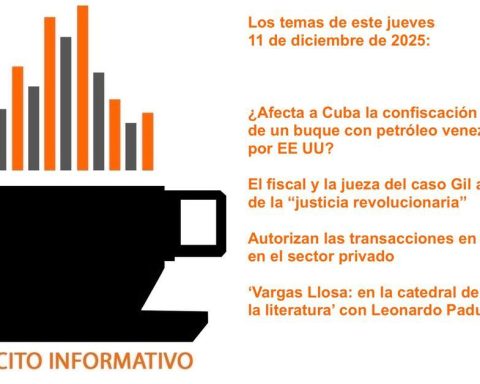Marco Belmonte / La Paz
A study warns that more than half of the gold that leaves the country does so without state control, a problem that has not only arisen in recent years, but dates back to the 19th century.
That is one of the main conclusions of an investigation embodied in the book El Oro en la historia de Bolivia, by historian Fabricio D. Gonzales Araníbar. The text was published in December 2021 and will be presented on April 11.
The author investigated how much gold Bolivia has, the value exported, its importance in the country’s history and also addressed the reality of cooperative mining that produces more than 80% of the gold in the country.
Period 2003-2017
Gonzales’s research addresses in a first part the historical evolution that gold has had from 1778 to the beginning of the 20th century and a second part the period from 2003 to 2017, where there is a boom and growth in the number of gold cooperatives that went from 3,550 in 2009 to 23,789 in 2017.

He assures that the support given by the MAS government to this sector with loans, subsidies and favorable regulations, such as Law 3797 or Supreme Decrees 29165 or 233, reduction in forms and tax advantages, contributes to this expansion.
According to Gonzales, in 2009 the cooperatives produced three and a half tons of gold, but in 2017 this volume rose to 23.8 tons. “These are official data, but since there has always been contraband, we can talk about 40 tons or at least 30 tons. In the 19th century, twice what was said to be produced was obtained and following that logic now the same is obtained, twice as much”, he indicated.
An element that draws attention in the analysis is that gold exports greatly exceed national gold extraction or equal it (see graph). For example, in 2012 the production was 12,000 kilos or 12 tons, but the export was 26,972 kilos (26 tons).
In 2014, 20,296 kilos were produced and 33,793 kilos (33.7 tons) were exported.
“Something doesn’t add up, is there exploitation of black smuggling that doesn’t declare or what is happening? Where does the 13 tons of difference between the 20 tons produced and the export of 33.7 tons come from?”, questioned the historian.
In the tax aspect there are also inconsistencies. “Because they are declared non-profit institutions, their contribution to the coffers of the State is almost zero”, he questioned.
In 2018, as an example, between January and September, private mining contributed 24.8 million dollars, 19.5% of all mining royalties, but cooperatives only contributed 82,919 dollars, 0.54% of total mining royalties. royalties and came to produce 93% of the gold. “The cooperatives do not contribute almost anything to the state coffers, the royalties are 299 times smaller than those of private mining, which only produced 7% of all the gold that year,” he remarked.
Last year gold was the country’s main export product.
Data from the National Institute of Statistics (INE) reveal an export volume of 55,807 kilos (55.8 tons) for a value of 2,557 million dollars. “If we follow the historical line of gold production in Bolivia, normally twice as much is extracted as it has, that happened for several years. It is very likely that in 2021 it will have doubled and that is why it is very important that the State controls what is illegal, ”he observed.
XIX century
Gonzales explained that in the 19th century and before, Larecaja in La Paz was an important metal producing center.
At that time and in some years, such as 1870, gold was declared free of taxes and does not even appear in the Treasury and Customs reports.
In 1895, 450 kilos were produced and 134 kilos were exported, the following year it rose to 500 kilos and 35 kilos were extracted and later in 1897 685 kilos were extracted and 41 kilos were exported. In 1900 it was possible to produce 550 kilos and sell 12 kilos.
According to Gonzales, during the 19th century Bolivia did not know how to take advantage of the validity of the gold standard to improve income. “All the countries adopted the gold standard, but Bolivia did not know how to take advantage of it. With official data it is known that if it produced 550 kilos / year and 12 kilos were exported, it means that more than 95% came out of contraband, it is impossible that this supply would have only been directed to jewelry, ”he indicated.
Furthermore, only a few families benefited the most. For example, the Villamil family, between 1818 and 1867, extracted 4,273 kilos or four tons in their mines and gold pans and without the State having control.
In contrast, during that time, for example, Colombia became the fourth world producer of gold and Venezuela the fifth.
According to the historian, the State did not control it because it was easier and more accessible to extract silver with richer veins. Then he bet on rubber and tin.
Second, and after independence, trade routes had been born and at this time smuggling flourished and control was lost.
Thus, at the end of the 19th century, more than 90% of gold production was smuggled out. “We don’t know if the State was aware of the contraband movement or was an accomplice, since some years the circulation was declared free of taxes or the tax rates were very low,” Gonzales pointed out.















